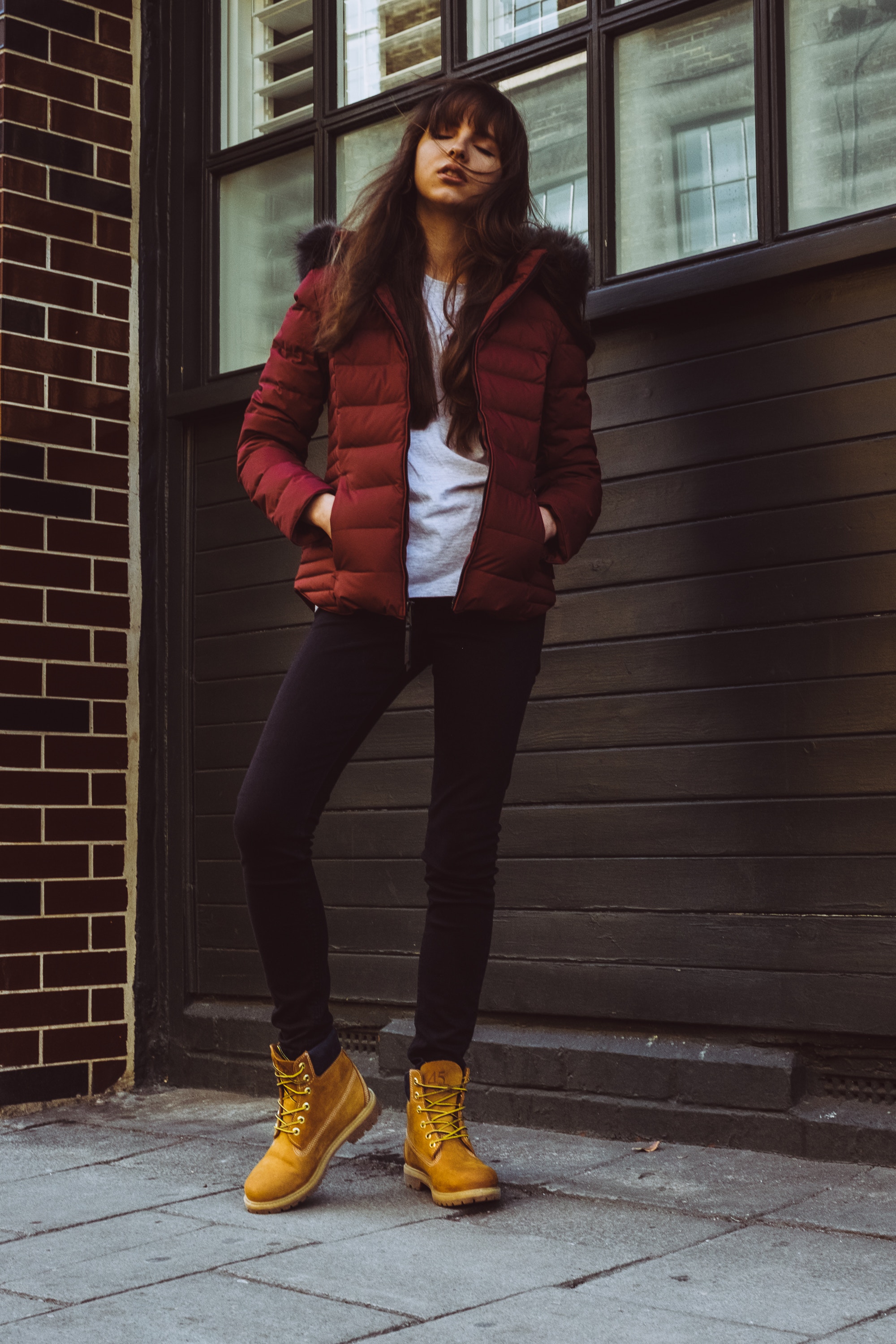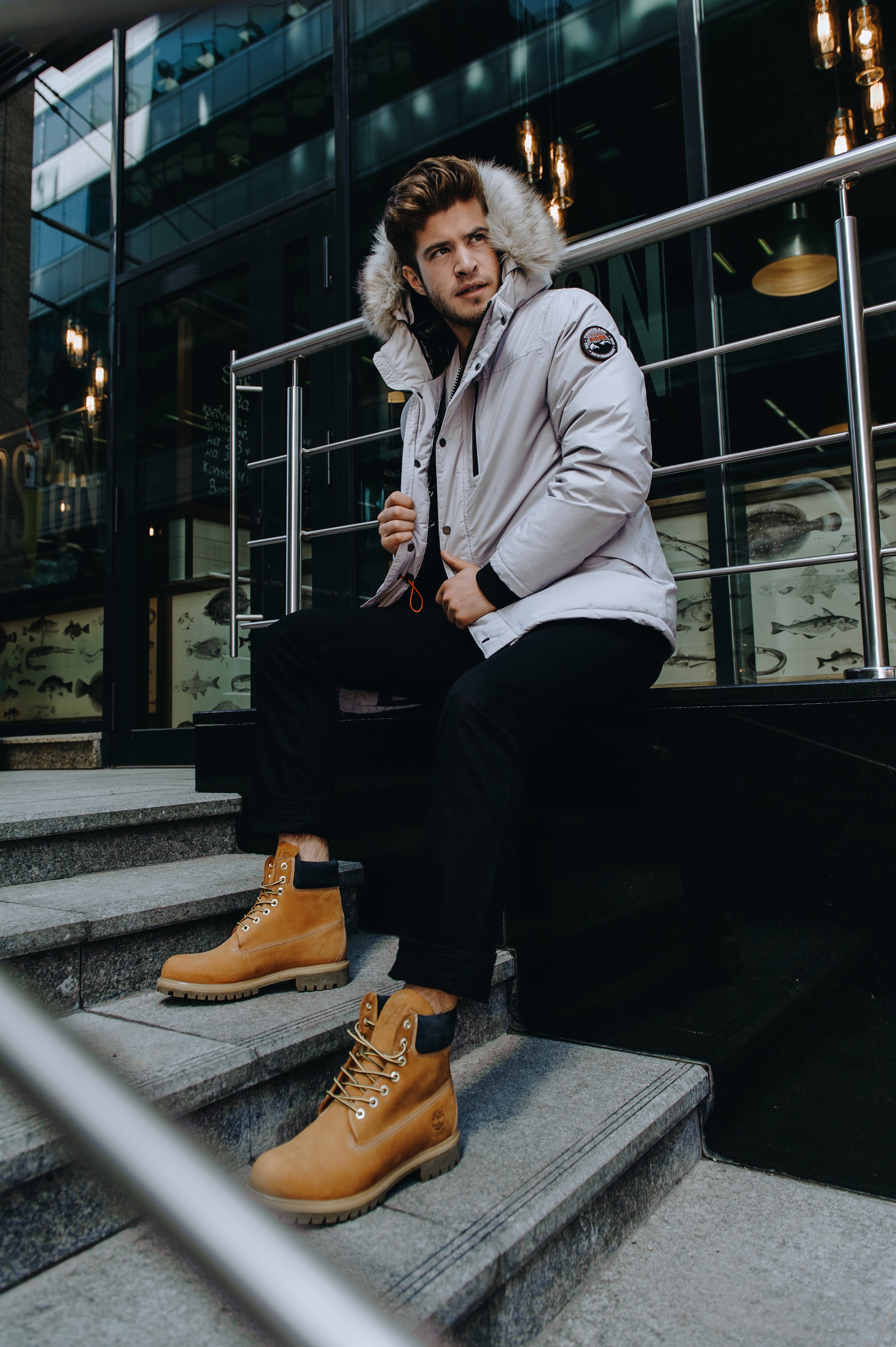The first time I wore a puffer jacket I remember the comments like, “Wow, that’s quite a coat.”
They also commented how my coat made me look way bigger than it should. Whatever that meant.
I really didn’t care, however, the coat kept me warm.
When Eddie Bauer first invented the puffer coat in 1936, it came shortly after a fishing trip nearly cost him his life and gave him a bout of hyperthermia that even an Iditarod contender would remember.
Bauer then gave the world his master invention. He gave us his creation of the puffer coat with all its pillows and rolls.

Looking cool while staying warm in a puffer jacket.
Decades later, and a few humiliating comments towards me, and you can’t turn a corner on Main St. without seeing someone donning a puffer jacket.
Know that Bauer’s vision came decades before the science of warm-wear fashion could keep up.
At the time they laughed at his masterpiece. They laughed at me for loving the warmth it gave me. No one laughs anymore.
That’s how innovation works. No one would ever bother to come up with an insulated masterpiece coat in areas like the equator where the temperature revolves around 70 degrees. They simply wouldn’t need a coat like that. One quote on warm-weather fashion goes, “There’s no such thing as being cold, only inappropriate clothing.”
That’s why someone like Bauer conceptualized a coat ahead of its time. Now the science of clothing duds lead to the creation of lightweight clothing that insulates and doesn’t add extra weight. There’s even coats now that contain warming sensors. That’s right, they contain their very own heating element that warms up when things turn cold.
If you’re someone like me who loves to hike in the Pacific Northwest, you’ve likely come across snow and were forced to find a way to navigate around said snow. You probably considered wearing your heaviest and thickest coat, well that left you cold, huh?
That’s because we humans sweat. That’s how our bodies regulate our internal temperatures. If you let the moisture from your sweat stay on your skin, it will freeze and make you extra cold. Your best bet for outwear in the hiking winter tends toward layers. Even better, try a fabric that wicks away the moisture. You will sweat on your hike. You want to go prepared. You want to find an extra thin fabric to wear for the first layer. Athletic wear or performance wear really can do the job of an under layer. Think polyester or Lycra fabrics. Most athletic attire comes in cool designs and colors and also serves a purpose. Gym rats sweat. The clothes they wear make the sweat virtually disappear. That’s because the fabric wicks away the moisture from the body’s natural cooling system.

Puffer jackets are versatile and work for anyone looking to stay warm in winter.
When I hike, I wear a performance shirt on the bottom and a puffer jacket on top. When I pick my puffer coat, I choose brands like Columbia that know how to make a classy jacket that can also keep you warm. I wear their boots too. I like clothes that are lightweight and help me regulate my internal temperature. Sometimes know that you can go hiking and it be sunny at the bottom of the hill, and cold with snow at the top.
You will want to keep your puffer jacket with you when you hike. You will think you don’t need it when you make your assent, you are wrong. Don’t be in the dark about your body’s needs. When you reach the top and you’re cold you will wish you had your coat. Boot up, coat up and go up. Remember these rules and you’ll do great. The work of hiking should be what you do with your legs, not your temperature. Yes, you will need to watch for the weather. You don’t want to end up in the winter version of 127 hours. Don’t go up unprepared. There’s dangers in them there hills, but there’s also beauty and magnificent sights that can’t be found elsewhere. Always remember to take care of your body, so you can experience the many gifts gotten from trekking in God’s country. If you accidentally get cold, don’t count yourself out. Walking uphill gears around maintaining balance and putting one foot in front of the other. When you’re first begin hiking, you will make mistakes. Know that you aren’t the sum of your mistakes. Prepare yourself. The best thing you can do for yourself, is to get clothing to match your hiking. If you are planning on hiking in the winter, you will want a puffer jacket. There’s very little else that should be your main priority. The coat you choose will keep you going through the worst inclement weather.
The nice thing about the puffer jacket is it now comes in many styles and sold by many makers. The innovation of Eddie Bauer finally is now a mainstay, like it should have been way back in 1936.

Who knows why it took decades to really make the coat as visible as it is today.
Who knows why it took decades to really make the coat as visible as it is today. Who knows, why my co-workers laughed at me once when I adorned the puffer jacket long before it became the main style of the current era. All I know is that coat keeps me warm in the winter. That coats lets me see the things that I want to see. That coat keeps me safe from the elements of nature that shows no mercy towards people who venture into hiking without the proper protection.
My suggestions are that you get a lightweight puffer coat that will keep you cozy in the cold weather if you like to go hiking in the cold winter. I love my puffy jackey. It keeps me warm and looks cool. That’s the science of fashion. When you have performance and style created by a master innovator, you really can’t go wrong. Cotton will keep you cold. You want to go with a fabric like polyester that will keep you dry while you walk. Hiking really is a science. Those of us who truly love the outdoors also really glean all the science behind performance fashion.




